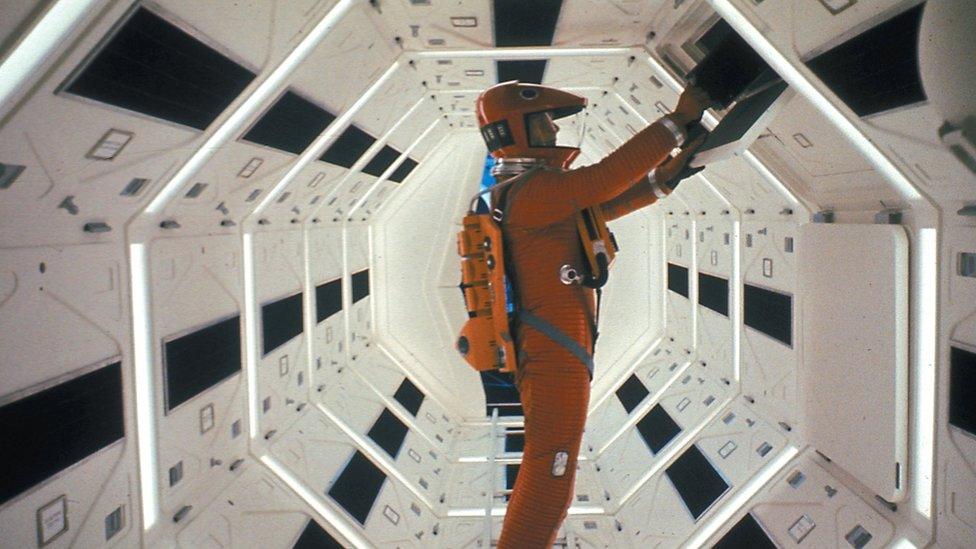Space Odyssey helps launch first 8K TV channel
- Published

2001: A Space Odyssey was released in 1968
Stanley Kubrick's 2001: A Space Odyssey helped launch the world's first super-high definition 8K television channel on Saturday.
Japanese broadcaster NHK said it had asked Warner Bros to scan the original film negatives in 8K for its new channel.
Super-high definition 8K pictures offer 16 times the resolution of HD TV.
However, few people currently have the necessary television or equipment to receive the broadcasts.
Super hi-vision
NHK says it has been developing 8K, which it calls super-hi vision, since 1995.
As well as improved picture resolution, broadcasts can include 24 channels of audio for immersive surround sound experiences.
It is hoping to broadcast the Tokyo 2020 Olympic Games and Paralympic Games using the new format.
Television manufacturers including Samsung and LG have announced 8K-capable television sets, but they are still prohibitively expensive for widespread adoption.
NHK's new channel BS8K will broadcast programmes for about 12 hours a day.
The first programme at 10:00 local time (01:00 GMT) was an information broadcast, highlighting future shows on the channel.
The channel also broadcast live from Italy to showcase "popular tourist attractions from Rome, as well as food, culture and history".
Space Odyssey
2001: A Space Odyssey has been remastered
NHK said it had chosen to broadcast 2001: A Space Odyssey on its launch night so that viewers could enjoy a "masterpiece of film history".
Although many movies are shot on 35mm film, 2001: A Space Odyssey was shot on 65mm film, which was the highest quality available at the time.
Warner Bros was able to scan the original film negatives, repair scratches and provide an 8K version of the film that captures the "power and beauty of the original".
"The many famous scenes become even more vivid, with the attention to detail of director Stanley Kubrick expressed in the exquisite images, creating the feeling of really being on a trip in space, allowing the film to be enjoyed for the first time at home," NHK said in a statement.
In March, the channel will broadcast My Fair Lady starring Audrey Hepburn, which was also shot on 65mm film.
A new strategy
Japanese electronics-maker Sharp began selling its first 8K television in 2015. At launch it cost $133,000 (拢104,000). Currently, the cheapest Samsung 8K television costs about 拢5,000.
Viewers will also need an 8K-capable satellite receiver. Sharp produces one that costs 250,000 yen (拢1,750; $2,200). It requires four HDMI cables to get the pictures into a Sharp TV set, and another cable for sound.
Since 8K televisions and receivers are not yet owned by many people, NHK intends to showcase equipment in venues around Japan.
It hopes live events will tempt people to tune in, but will also repeat programmes regularly.
"8K is at the moment based around watching at the time of broadcast," it said in a statement. "We plan to increase the number of chances to watch through rebroadcasts."
"Content has always been crucial for a new TV technology to take off," Joe Cox, editor-in-chief of technology news site What Hi-Fi, told the 麻豆社.
"The launch of the world's first 8K TV channel is great news, even if it is only in Japan. But realistically, mass market adoption is still a long, long way off.
"While the likes of Amazon and Netflix have charged head first into 4K this year, the 麻豆社 is only at the trial stage, and others are still struggling to stream HD, so 8K remains a pipedream in the UK.
"But with TV brands suggesting 8K resolution screens can improve 4K and even HD pictures, expect to see plenty more 8K TVs in 2019, even if the content doesn't come so quickly."
- Published30 August 2018
- Published31 August 2018